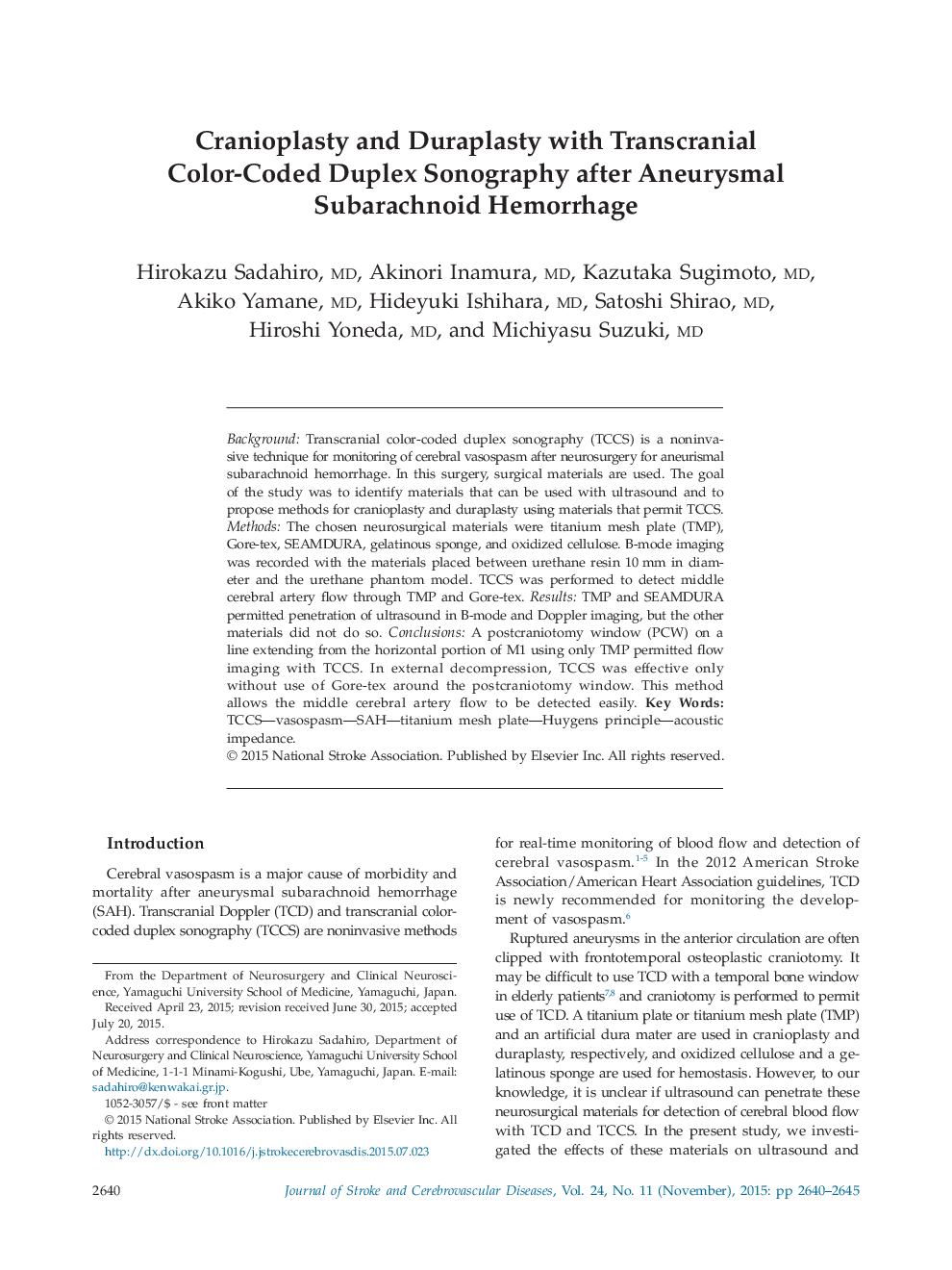| Article ID | Journal | Published Year | Pages | File Type |
|---|---|---|---|---|
| 2702438 | Journal of Stroke and Cerebrovascular Diseases | 2015 | 6 Pages |
BackgroundTranscranial color-coded duplex sonography (TCCS) is a noninvasive technique for monitoring of cerebral vasospasm after neurosurgery for aneurismal subarachnoid hemorrhage. In this surgery, surgical materials are used. The goal of the study was to identify materials that can be used with ultrasound and to propose methods for cranioplasty and duraplasty using materials that permit TCCS.MethodsThe chosen neurosurgical materials were titanium mesh plate (TMP), Gore-tex, SEAMDURA, gelatinous sponge, and oxidized cellulose. B-mode imaging was recorded with the materials placed between urethane resin 10 mm in diameter and the urethane phantom model. TCCS was performed to detect middle cerebral artery flow through TMP and Gore-tex.ResultsTMP and SEAMDURA permitted penetration of ultrasound in B-mode and Doppler imaging, but the other materials did not do so.ConclusionsA postcraniotomy window (PCW) on a line extending from the horizontal portion of M1 using only TMP permitted flow imaging with TCCS. In external decompression, TCCS was effective only without use of Gore-tex around the postcraniotomy window. This method allows the middle cerebral artery flow to be detected easily.
